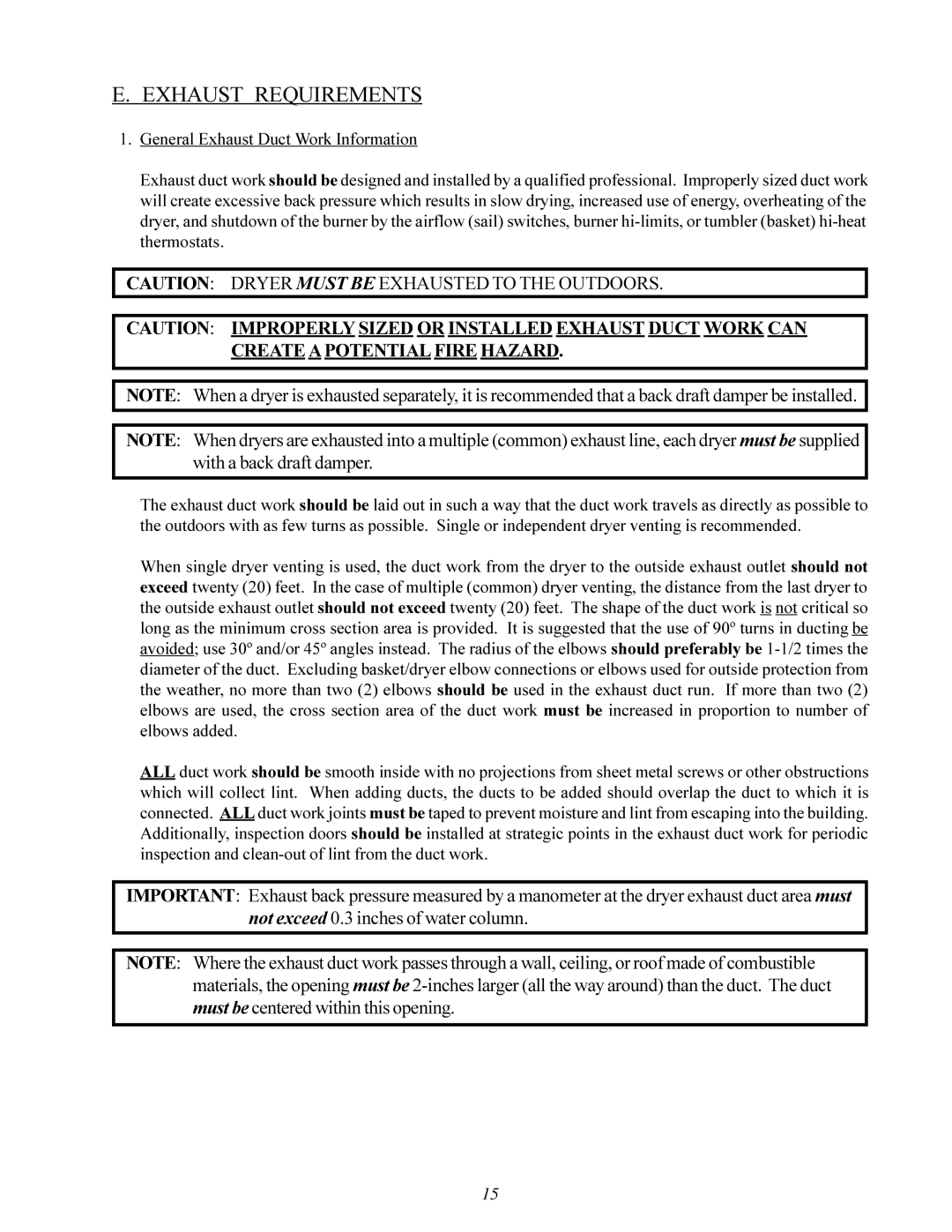
E. EXHAUST REQUIREMENTS
1.General Exhaust Duct Work Information
Exhaust duct work should be designed and installed by a qualified professional. Improperly sized duct work will create excessive back pressure which results in slow drying, increased use of energy, overheating of the dryer, and shutdown of the burner by the airflow (sail) switches, burner
CAUTION: DRYER MUST BE EXHAUSTED TO THE OUTDOORS.
CAUTION: IMPROPERLY SIZED OR INSTALLED EXHAUST DUCT WORK CAN
CREATE A POTENTIAL FIRE HAZARD.
NOTE: When a dryer is exhausted separately, it is recommended that a back draft damper be installed.
NOTE: When dryers are exhausted into a multiple (common) exhaust line, each dryer must be supplied with a back draft damper.
The exhaust duct work should be laid out in such a way that the duct work travels as directly as possible to the outdoors with as few turns as possible. Single or independent dryer venting is recommended.
When single dryer venting is used, the duct work from the dryer to the outside exhaust outlet should not exceed twenty (20) feet. In the case of multiple (common) dryer venting, the distance from the last dryer to the outside exhaust outlet should not exceed twenty (20) feet. The shape of the duct work is not critical so long as the minimum cross section area is provided. It is suggested that the use of 90º turns in ducting be avoided; use 30º and/or 45º angles instead. The radius of the elbows should preferably be
ALL duct work should be smooth inside with no projections from sheet metal screws or other obstructions which will collect lint. When adding ducts, the ducts to be added should overlap the duct to which it is connected. ALL duct work joints must be taped to prevent moisture and lint from escaping into the building. Additionally, inspection doors should be installed at strategic points in the exhaust duct work for periodic inspection and
IMPORTANT: Exhaust back pressure measured by a manometer at the dryer exhaust duct area must not exceed 0.3 inches of water column.
NOTE: Where the exhaust duct work passes through a wall, ceiling, or roof made of combustible materials, the opening must be
15
